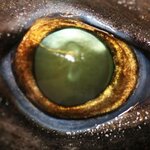Ecology & Zoology

In European culture, it is widely accepted that magpies (Pica pica) are the thieves of the bird kingdom, attracted to sparkly things and prone to stealing them for their nests.
But psychologists at the Centre for Research in Animal Behaviour (CRAB) at the University of Exeter have analyzed magpies and found that the species is actually frightened of new and unfamiliar objects rather than attracted to them.
The researchers carried out a series of experiments with both a group of magpies which had come from a rescue center, and wild magpies in the grounds of the University. The birds were…

A new paper delineating spiders’ roles within their colonies is intriguing because the spiders’ specialization (like caregiver or hunter-warrior) isn’t determined by size or physical structure, like with ants, but by personalities.
Aren't spiders loners? Most are, but a few species such as Anelosimus studiosus live in groups.
Colin Wright, a second-year PhD student in the University of Pittsburgh’s Department of Biological Sciences, along with Jonathan Pruitt, assistant professor of behavioral ecology at Pitt and Tate Holbrook of the College of Coastal Georgia, separated docile spiders…

A scientist has discovered a potentially new form of plant communication, one that allows them to share an extraordinary amount of genetic information with one another.
Professor Jim Westwood examined the relationship between a parasitic plant, dodder, and two host plants, Arabidopsis and tomatoes. In order to suck the moisture and nutrients out the host plants, dodder uses an appendage called a haustorium to penetrate the plant. Westwood previously broke new ground when he found that during this parasitic interaction, there is a transport of RNA between the two species. RNA translates…

Trees have been a part of the human existence for as long as humans have existed but that doesn't mean we know everything about them, like why they are the size they are. What limits the height of trees? Is it the fraction of their photosynthetic energy they devote to productive new leaves? Or is it their ability to hoist water hundreds of feet into the air, supplying the green, solar-powered sugar factories in those leaves?
The easy and therefore not vary satisfying answer is that both resource allocation and hydraulic limitation might play a role, but the question still becomes which factor…

Humans train animals by rewarding them with tasty treats and trainers couple the reward with a sound, such as a buzz or a whistle. Once the animal has mastered the task, the trainer stops dispensing food, relying instead on the whistle or buzzer to inform the animal that it has performed successfully and that it will be rewarded - with food, but later.
Even though there may be no food reward at the time, whales and dolphins still squeal in response to the sound substituted for the food reward. And Sam Ridgway found that when he trained dolphins and beluga whales to switch off a sound…

Conservation wants to preserve nature as it is while wildlife management seeks to maintain responsible levels for animal populations. There is a reasonable balance. In Pennsylvania, for example, there are plenty of state and national park acres but hunting is big business and the fees pay for biologists and state nature management.
In the United Kingdom, science is more controversial. Everything from hunting to GMOs to vaccines have been the subjects of well-funded activist campaigns against them. But in at least one area of wildlife management, there may be compromise. A standoff between…

Slippery as an eel may be a popular phrase but it turns out they are a lot easier to catch when marine vessels make noise nearby.
In a Global Change Biology paper, researchers from the Universities of Exeter and Bristol found that fish exposed to playback of ship noise lose crucial responses to predator threats - European eels (anguilla anguilla)were 50% less likely to respond to an ambush from a predator, while those that did had 25% slower reaction times.
Those that were pursued by a predator were caught more than twice as quickly when exposed to the noise.
European eel (anguilla…

Juvenile loggerhead turtles don't just passively drift through life, they swim into oncoming ocean currents, according to a new study.
After loggerhead turtle hatchlings leave nesting beaches, they live in the ocean for 7-12 years before migrating to coastal habitats. Juvenile loggerhead turtles have good swimming abilities, but scientists aren't sure if they passively drift in ocean currents or actively swim. Combining turtle movement data with ocean circulation models aids scientists in understanding how juvenile turtles orient themselves in response to a current flow.
In the new study,…

Lanternsharks produce and perceive bioluminescent light in order to communicate, find prey, and camouflage themselves against predators in the mesopelagic twilight zone.
The mesopelagic twilight zone is 200-1000 meters deep in the sea - a vast, dim habitat, where, with increasing depth, sunlight is progressively replaced by point-like bioluminescent emissions. To better understand strategies used by bioluminescent predators inhabiting this region that help optimize photon capture, the authors of a new study analyzed the eye shape, structure, and retinal cell mapping in the visual systems of…

It's no surprise that between 1880 and 1920, as the population increased and America became more settled, Missouri, Oklahoma and Arkansas had increased deforestation and that decreased the habitat for black bears and other forest species.
To remedy that and repopulate that mountainous region known as the Central Interior Highlands (CIH), more than 250 bears from Minnesota and Manitoba were relocated to Arkansas in the 1950s and 1960s. Researchers have analyzed genetic diversity in black bears in the
the Central Interior Highlands
and determined that conservation management has worked,…